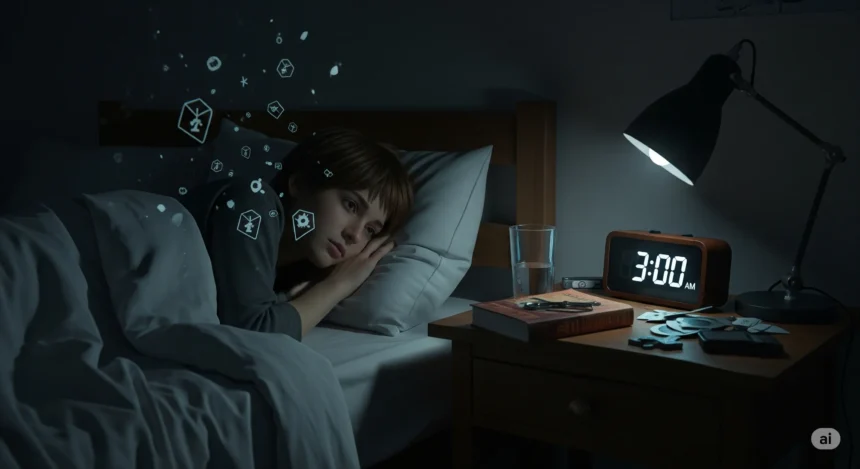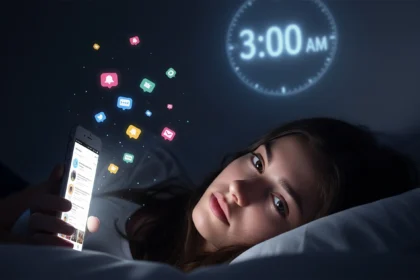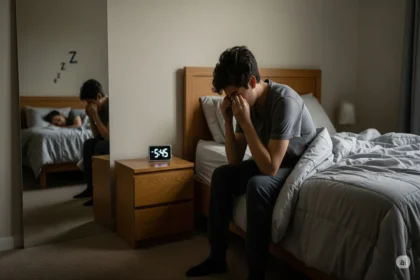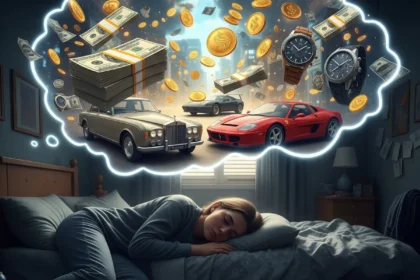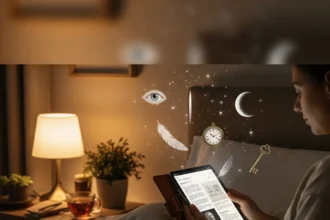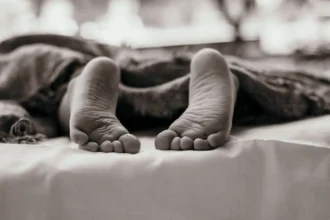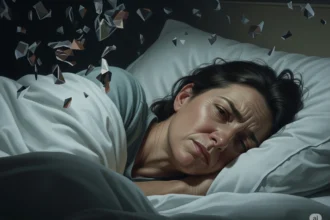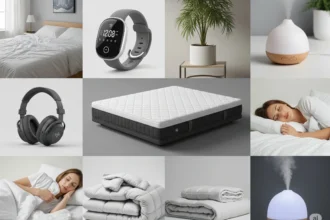The pursuit of a good night’s sleep often feels like a modern odyssey. We yearn for it, chase it, and sometimes, it seems to perpetually elude us. For millions worldwide, the struggle isn’t just about occasional restlessness; it’s a chronic battle against Sleep Disorders, conditions that profoundly disrupt the natural rhythm of rest, leaving individuals perpetually exhausted, irritable, and vulnerable to a cascade of health issues. These aren’t simply bad habits or a lack of willpower; they are complex medical conditions rooted in physiological, neurological, and psychological imbalances that demand understanding, accurate diagnosis, and effective solutions.
Imagine Mark, a seemingly healthy middle-aged man, whose wife constantly complains about his thunderous snoring. Mark dismisses it, but he wakes up every morning feeling as if he hasn’t slept at all, battling daytime fatigue, headaches, and a constant brain fog. He’s irritable, his memory is failing, and he’s even fallen asleep at the wheel. Unbeknownst to him, he’s suffering from severe sleep apnea, his breathing repeatedly stopping and starting throughout the night, depriving his brain and body of vital oxygen. Or consider Sarah, who dreads bedtime. Every night, as she tries to drift off, an irresistible urge to move her legs, accompanied by uncomfortable creeping sensations, keeps her awake for hours. She’s exhausted, but her legs won’t let her rest, a classic sign of Restless Legs Syndrome. These are just two faces of the vast and varied landscape of sleep disorders, each with its unique challenges but a shared impact: the erosion of health and quality of life.
The Foundation of Rest: Understanding Healthy Sleep
Before delving into what goes wrong, it’s essential to grasp what healthy sleep entails. Sleep is not a passive state; it’s an active, complex biological process vital for physical restoration, cognitive function, and emotional regulation. A typical night’s sleep involves cycling through distinct stages:
- Non-Rapid Eye Movement (NREM) Sleep: This comprises three stages, progressing from light sleep (N1) to deeper sleep (N2), and finally, the most restorative stage, slow-wave sleep (N3). N3 is crucial for physical repair, hormone release, and consolidating factual memories.
- Rapid Eye Movement (REM) Sleep: Characterized by vivid dreams, increased brain activity, and temporary muscle paralysis (atonia). REM sleep is vital for emotional processing, problem-solving, and consolidating procedural memories (skills).
Most adults need 7-9 hours of quality sleep per night to complete these cycles effectively. When this process is chronically disrupted, the body and mind begin to unravel.
Common Sleep Disorders: Symptoms and Impact
Sleep disorders manifest in various ways, each with its unique set of symptoms and consequences. Recognizing these signs is the first step towards seeking help.
1. Insomnia: The Elusive Dream
Insomnia is arguably the most common sleep disorder, characterized by persistent difficulty falling asleep, staying asleep, or waking up too early and being unable to return to sleep, despite having ample opportunity for rest. It’s not just an occasional restless night; for it to be a disorder, these difficulties must occur at least three nights a week for three months or more, causing significant distress or impairment in daily functioning.
Symptoms:
Impact: Chronic insomnia severely impacts cognitive function, increasing the risk of accidents, impairing memory and decision-making. It’s strongly linked to mental health issues like depression and anxiety, and can exacerbate physical conditions such as hypertension and diabetes.
2. Sleep Apnea: The Silent Suffocation
Sleep apnea is a potentially serious disorder where breathing repeatedly stops and starts during sleep. The most common form is Obstructive Sleep Apnea (OSA), caused by the collapse of soft tissues in the throat, blocking the airway. Central Sleep Apnea (CSA) is less common and occurs when the brain fails to send proper signals to the muscles that control breathing.
Symptoms:
Impact: The repeated drops in oxygen levels and fragmented sleep associated with apnea put immense strain on the cardiovascular system. It significantly increases the risk of high blood pressure, heart attack, stroke, irregular heartbeats, and Type 2 Diabetes. It also severely impairs daytime functioning, increasing accident risk.
3. Restless Legs Syndrome (RLS): The Unsettling Urge
Restless Legs Syndrome, also known as Willis-Ekbom Disease, is a neurological disorder characterized by an irresistible urge to move the legs, usually accompanied by uncomfortable sensations. These sensations are often described as creeping, crawling, tingling, aching, or itching deep within the legs.
Symptoms:
Impact: RLS severely disrupts sleep initiation and maintenance, leading to chronic sleep deprivation. This can result in significant daytime fatigue, impaired concentration, and mood disturbances. It can also lead to social anxiety due to the need to constantly move.
4. Narcolepsy: The Sudden Sleep Attack
Narcolepsy is a chronic neurological condition characterized by overwhelming daytime drowsiness and sudden attacks of sleep. It’s caused by the brain’s inability to regulate sleep-wake cycles normally, often due to a deficiency of hypocretin (also called orexin), a neurotransmitter that helps regulate wakefulness and REM sleep.
Symptoms:
Impact: Narcolepsy significantly impairs quality of life, affecting education, employment, and social interactions. The sudden sleep attacks and cataplexy can be dangerous, increasing the risk of accidents.
5. Parasomnias: When Sleep Gets Active
Parasomnias are a group of sleep disorders characterized by abnormal behaviors, movements, emotions, perceptions, or dreams that occur while falling asleep, during sleep, or upon waking. They represent a partial arousal from sleep.
Types Include:
Impact: While some parasomnias are benign, others can lead to injury to oneself or others, significant distress, and disruption of sleep for bed partners. RBD, in particular, warrants medical evaluation due to its potential link to other neurological conditions.
Diagnosing Sleep Disorders: The Path to Understanding
The first step in addressing a sleep disorder is often a consultation with your primary care physician, who may then refer you to a sleep specialist. Diagnosis typically involves:
Bridging the Gap: Solutions and Treatments
Once diagnosed, a range of solutions and treatments are available, often tailored to the specific disorder.
1. Lifestyle Modifications and Sleep Hygiene
These are foundational for almost all sleep disorders and involve optimizing your environment and habits:
2. Cognitive Behavioral Therapy for Insomnia (CBT-I)
CBT-I is considered the first-line treatment for chronic insomnia. It’s a structured program that helps identify and replace thoughts and behaviors that prevent sleep with habits that promote sound sleep. It addresses the underlying causes of insomnia, rather than just the symptoms. Components include:
3. Medical Interventions
- For Sleep Apnea:
- CPAP (Continuous Positive Airway Pressure): The most common and effective treatment, involving a mask worn during sleep that delivers a continuous stream of air to keep the airway open.
- Oral Appliances: Custom-made devices that reposition the jaw and tongue to keep the airway open.
- Surgery: In some cases, surgical procedures may be an option to remove excess tissue or reposition structures in the throat.
- Lifestyle Changes: Weight loss, avoiding alcohol and sedatives, and sleeping on your side can help.
- For Restless Legs Syndrome:
- Medications: Dopaminergic agents (e.g., pramipexole, ropinirole), gabapentin, or benzodiazepines may be prescribed.
- Iron Supplementation: If an iron deficiency is identified.
- Lifestyle Changes: Regular moderate exercise, avoiding caffeine, warm baths, and massage.
- For Narcolepsy:
- Medications: Stimulants (e.g., modafinil, armodafinil) to promote wakefulness, or antidepressants to manage cataplexy and other REM-related symptoms. Sodium oxybate is also used to improve nighttime sleep and reduce daytime sleepiness.
- Scheduled Naps: Short, strategic naps during the day can help manage excessive sleepiness.
- For Parasomnias:
- Safety Measures: For sleepwalking and RBD, ensuring a safe sleep environment (e.g., locking windows/doors, removing hazards) is crucial.
- Addressing Triggers: Reducing stress, improving sleep hygiene, and treating underlying sleep disorders (like sleep apnea) can help.
- Medications: In some cases, medications like benzodiazepines may be used, particularly for RBD.
Conclusion: Reclaiming the Night, Reclaiming Life
Sleep disorders are not a sign of weakness; they are medical conditions that deserve attention and effective treatment. Living with an undiagnosed or untreated sleep disorder is like trying to run a marathon on a flat tire – exhausting, inefficient, and ultimately damaging. The pervasive fatigue, the cognitive fog, the emotional toll, and the serious health risks can profoundly diminish one’s quality of life.
However, the good news is that most sleep disorders are treatable. By understanding the symptoms, seeking professional diagnosis, and committing to evidence-based solutions, individuals can bridge the “sleep gap” and reclaim the restorative power of the night. It’s a journey that requires patience and persistence, but the rewards are immeasurable: a sharper mind, a healthier body, a more stable mood, and the energy to fully engage with life. Prioritizing sleep is not a luxury; it’s a fundamental act of self-care, a vital investment in our overall well-being, allowing us to wake up not just alive, but truly alive and thriving.
Disclaimer: The information provided in this article is for general informational purposes only and does not constitute medical advice. It is not a substitute for professional medical advice, diagnosis, or treatment. Always seek the advice of your physician or other qualified health provider with any questions you may have regarding a medical condition. Never disregard professional medical advice or delay in seeking it because of something you have read on this website.

